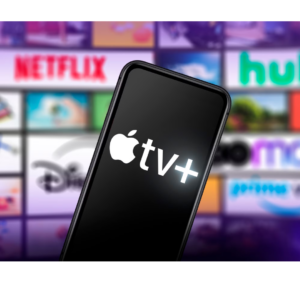CLUSTERSUBHUB Blog
Comparing Subscription Sharing Methods: Which is Best for You
minutes
16 March 2025

Comparing Subscription Sharing Methods :Which is Best for You?
Subscription services have become a big part of our daily lives. From Netflix for movies to Spotify for music and Microsoft 365 for work, many Nigerians now rely on subscriptions for entertainment, education, and productivity. Even mobile data plans and gym memberships work on a subscription model. But with so many options available, choosing the right subscription plan can be confusing. Should you pay monthly or yearly? Is a quarterly plan better? Or should you consider subscription sharing, where you split costs with others? In this article, we’ll compare different subscription methods — monthly, quarterly, yearly, and shared subscriptions — so you can decide which one is best for you. If you're looking for a way to save money while still enjoying premium services, platforms like ClusterSub make it easy to share subscriptions safely.
What is Subscription Pricing?
Subscription pricing is a payment model where you pay regularly (monthly, quarterly, or yearly) to access a product or service instead of buying it outright. Instead of paying a one-time fee, you continue paying as long as you use the service. This model is common in industries like:- Streaming services: Netflix, Showmax, and Spotify charge a monthly or yearly fee for unlimited access.
- Software & productivity tools: Microsoft 365, Canva, and Google Workspace offer subscriptions for personal and business use.
- E-commerce & memberships: Platforms like Amazon Prime and Jumia Prime provide benefits like free delivery and exclusive deals.
Subscription Pricing Models
Companies use different pricing models to make subscriptions attractive. Here are some common ones:- Flat-rate pricing: A fixed amount gives you full access. An example is Netflix's standard plan, which costs the same every month.
- Tiered pricing: Different levels of access are available at different prices. For example, Spotify Free (with ads) is cheaper than Spotify Premium (no ads, offline play).
- Usage-based pricing: You pay based on how much you use. Example: Cloud storage services like Google Drive charge based on storage size.
Types of Subscription Plans
Subscription plans come in different formats, each with its benefits and downsides. Let’s break down the four main types:Monthly Subscriptions
This is the most common subscription option. With this option, you pay a fixed amount every month to continue using a service.Pros:
- Flexibility—you can cancel anytime without a long-term commitment.
- It is good to test a service before committing to it in the long term.
- It is easier to manage financially since payments are spread out.
Cons:
- It is more expensive in the long run compared to yearly plans.
- Continuous billing can become a burden over time.
Quarterly Subscriptions
Some services offer a quarterly plan, where you pay every three months instead of every month or year.Pros:
- It often comes with slight discounts compared to monthly plans.
- Less frequent billing compared to monthly subscriptions.
Cons:
- It's still more expensive than yearly subscriptions.
- Requires commitment for at least three months.
Yearly Subscriptions
A yearly plan requires paying for 12 months upfront but usually comes with significant discounts.Pros:
- Cheaper in the long run: companies often offer 20-50% discounts for yearly payments.
- Hassle-free: no need to worry about monthly payments.
Cons:
- Requires a significant upfront payment.
- No flexibility: you won’t get your money back if you stop using the service.
Shared Subscriptions (Group Plans)
Shared subscriptions allow multiple users to share one account, reducing costs significantly. Platforms like ClusterSub help Nigerians split subscription costs legally and safely.Pros:
- The most affordable option: costs are divided among multiple users.
- Access to premium features at a lower price.
Cons:
- Some services have restrictions on account sharing.
- You need to trust the people you’re sharing with.

Which Subscription Plan is Best for You?
Choosing the right subscription plan depends on several factors, including your budget, usage habits, and need for flexibility.Key Factors to Consider:
- Budget: Can you afford a yearly subscription upfront, or do you prefer smaller monthly payments?
- Flexibility: Do you want the option to cancel anytime, or are you comfortable committing to the long term?
- Usage Frequency: Will you use the service regularly enough to justify a long-term plan?
- Number of Users: Can you share the plan with others to reduce costs?
Which Plan Should You Choose?
| Plan Type | Best For | Example |
| Monthly | People who prefer flexibility | Paying for Netflix monthly instead of yearly |
| Quarterly | Users who want a balance between savings and flexibility | A 3-month gym subscription |
| Yearly | Users who want long-term savings and can pay upfront | Canva Pro annual plan (cheaper than paying monthly) |
| Shared Subscription | People who want premium access at a lower cost | Netflix, Spotify, and Disney+ plans split with friends via ClusterSub |
Pros and Cons of Subscription Sharing
Subscription sharing has become a popular way to access premium services at a lower cost. Platforms like ClusterSub make it easy to split subscriptions legally and securely. However, before choosing this option, it is important to weigh the advantages and disadvantages.Pros of Subscription Sharing
- Cost Savings: Subscription sharing reduces the cost per user. Instead of paying ₦7,000 monthly for Netflix Premium, you could split it with four people and pay only ₦1,750.
- Access to Premium Features: Shared plans usually include premium features that individual plans do not. For example, Spotify Family allows multiple accounts to enjoy ad-free music, downloads, and high-quality audio.
- Flexibility: With platforms like ClusterSub, you can join or leave a shared plan easily, giving you more control over your subscription expenses.
- Better Value for Money: Instead of paying for multiple services individually, you can pool resources with others to enjoy more subscriptions for less.
Cons of Subscription Sharing
- Account Restrictions: Some services limit shared accounts to specific locations or require all users to live in the same household. This could make sharing difficult unless you use a platform that manages it properly.
- Risk of Unauthorised Access: If you share your account directly without a secure platform, there’s a risk of password leaks or unauthorised use. Services like ClusterSub help prevent this by managing payments and access securely.
- Limited Customisation: Some shared plans restrict personal preferences. For example, only the main account holder can manage family settings on a shared YouTube Premium plan.
- Commitment Issues: If one member stops paying or leaves suddenly, others might have to cover the cost. Using a structured platform like ClusterSub ensures stability.
Conclusion: Making the Right Subscription Sharing Choice
Choosing the right subscription model depends on your budget, usage habits, and flexibility needs. Here's a quick recap to help you decide:- If you need full flexibility, go for a monthly plan.
- A quarterly plan might work best if you want to save money while keeping some flexibility.
- Choose a yearly plan if you can pay upfront and want the best value.
- If you wish to have premium access at a lower cost, subscription sharing with ClusterSub is a great option.
Related Posts

What is Shared Subscription?: Pros, cons and recommendations

ClusterSub Hub’s Shared Subscription Model: A Comprehensive Guide to Affordable and Flexible Streaming
Imagine paying full price for three or four streaming services just to keep up with your favorite shows and music. It’s exhausting and expensive. That’s where ClusterSub Hub comes in, allowing people to share their premium subscriptions without breaking the bank.

How Clustersub Hub is Revolutionizing Premium Subscription Sharing in Nigeria
Discover how Clustersub Hub is revolutionizing access to premium subscriptions in Nigeria by allowing users to share and save on services like Netflix and Spotify. Join a community that values affordability and connection!

